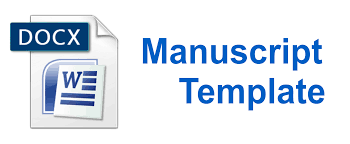Bimbingan Pemanfaatan Sandpaper latter Dalam Upaya Pendampingan Belajar Anak Menghafal Huruf Hijaiyah Di Tk Semai Benih Bangsa Desa Aek Nagaga Kecamatan Rahuning
Keywords:
Sandpaperletter, Learning media, Letter HijaiyaAbstract
children to feel a letter symbol. In addition to introducing letters, sandpaper letters are one of the learning media that can be useful as an exercise to use the muscle mechanisms needed for the ability to hold and use stationery then, the fingers of children who have been trained through fingering the shapes of letters become a complement to children's visual knowledge of letters. The principle of sandpaper letter is to utilize the entire senses, both visual, auditory, and tactile to maximize the absorption of children understanding their environment. Letter recognition based on Montessori is based on 3 steps, namely: : 1) The presence of visual stimulation and muscle-touch accompanied by the sound of the letters by inviting children to mention letters according to those read by the teacher then touching and tracing the sandpaper letter according to how to write the letter, 2) Children can recognize letters when they hear the sound, 3) Children are able to answer teacher questions after being introduced to letters. By using sandpaper letter media, it is hoped that the implementation of this learning assistance can help children to memorize hijaiyah letters so that children can immediately move up to the next volume level. In addition, by activating the child's tactile and muscles, it is hoped that it can train their motor skills to be more confident in writing letters. The purpose of this service program is to reveal how the use of sandpaper letters can help children memorize hijaiyah letters in children who have difficulty memorizing hijaiyah. This service program can be useful for students so that they can learn hijaiyah letters and continue to the next level. Sandpaper letter media can be used to help teachers and parents introduce hijaiyah letters to children
References
Bradley, B., & Jones, J. (2007). Sharing Alphabet Books in Early Childhood Classrooms.
International Reading Association (pp. 452–463) doi:10.1598/RT.60.5.5, 452-463.
Dunst, C. J., Jones, T., Johnson, M., Raab, M., & Hamby, D. (2011). Role of Children’s Interests in
Early Literacy and Language Development. Center for Early Literacy Learning Volume 4 Number 5, 1-18.
Ecalle, J., Magnan, A., & Chevrier, C. B. (2008). Alphabet knowledge and early literacy skills in French beginning readers. European Journal Of Developmental Psychology, 303-325.
Elliott, E. M., & Olliff, C. B. (2008). Developmentally Appropriate Emergent Literacy Activities for Young Children: Adapting the Early Literacy and Learning Model. Early Childhood Educ J (2008) 35:551–556, 551–556.
Guttek, G. L. (2013). Metode Montessori. Yogyakarta: Pustaka Pelajar.
Hoffman, J. L., & Paciga, K. A. (2014). Click, Swipe, and Read: Sharing e-Books withToddlers. Early Childhood Educ J (2014) 42:379–388, 379-388.
Jones, C. D., Clark, S. K., & Reutzel, D. R. (2013). Enhancing Alphabet Knowledge Instruction: Research Implications and Practical Strategies for Early Childhood Educators. Early Childhood Educ J (2013) 41:81–89 DOI 10.1007/s10643-012-0534-9 , 81-89.
Papalia, D. E., Old, S. W., & Feldman, R. D. (2010). Human Development. Jakarta: Kencana Prenada
Media. Rolina, N. (2012). Alat Permainan Edukatif Untuk AUD. Yogyakarta: Penerbit
Downloads
Published
Versions
- 2022-08-24 (2)
- 2022-08-23 (1)









